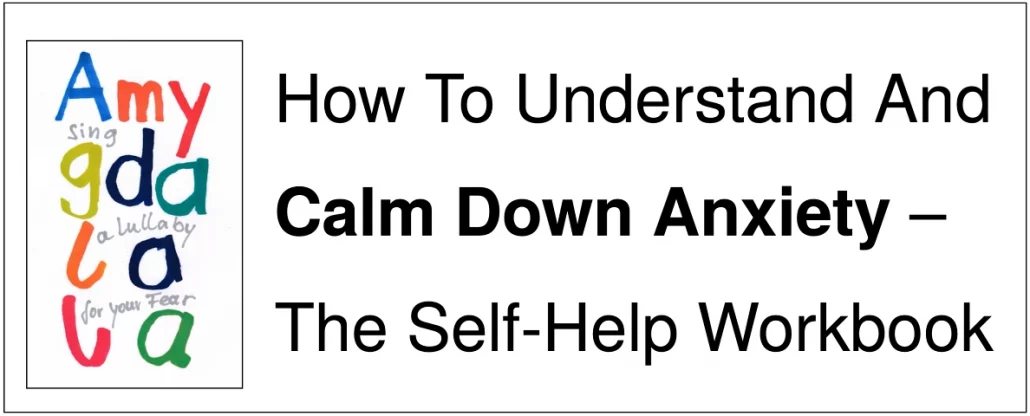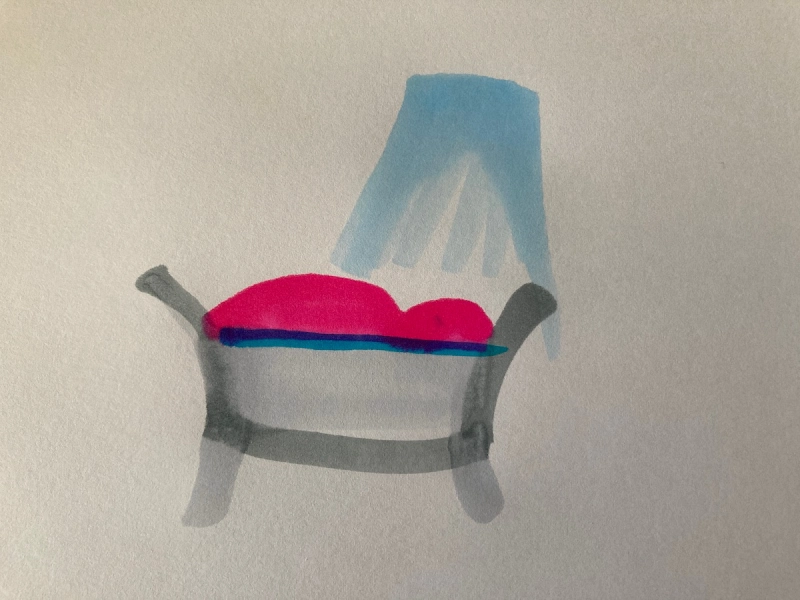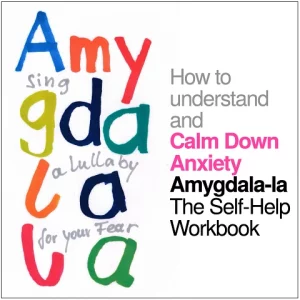
Just another anxiety workbook?
There’s a lot of self-help literature out there.
Many books are helpful.

I offer a supplement and expansion with my self-help book:
I invite readers to develop a new, helpful reflex.
Why is it about a reflex?
Fear arises as in reflex.
No one plans to be scared within a split second. That’s why the fright is faster than the mind.
Because anxiety, fright, and fear are always faster than the mind, we also need a response to these phenomena that is significantly faster than thought.
Let’s go back to childhood. No, not in the sense of psychoanalysis.
Let’s look at what a loving mother does with her crying baby:
- Does she discuss with the child?
- Does she let it cry so that it learns that there is no real danger at all (compare: Confrontation training in cognitive behavioral therapy).
- Does she give the child good arguments to calm down?
No. None of the above.
This is what a mother does
A good mother goes to her child, takes him in her arms, cradles him and sings him a song until he falls asleep again. A mother offers the child the best protection in the world: the emotional security that he or she is safe, even when the tummy hurts and the first teeth come through.
Help and self-help with anxiety – whether it is called fear, dread or fright – helps the brain below the level of the mind.
The mother’s lullaby reaches the brain stem and midbrain.
My little self-help book addresses your brain stem and midbrain. You only need to implement pictorially what I offer you. Your brain is capable of helping itself and thus you as a human being.

The Amygdalala Self-help Workbook on Anxiety and Panic
Amygdalala – Sing a lullaby to your fear, sadness, and anger.
This is Applied Classical Conditioning for Everyday Life.
- So many people suffer from fear – and they are afraid of fear.
- This e-book shows a different way to deal with fear.
- It is a self-help workbook for dealing with fear in a mindful and positive, appreciative way.
Why this workbook does not talk about fighting fear and panic.
When we try to attack or fight, negative emotions arise.
How well can you reduce your fear in the context of negative emotions?
Watch this remarkable talk. Zen master Thich Nhat Hanh describes “Practicing with Unpleasant Emotions.”
This talks about embracing the negative emotions.
Whose body is feeling the negative emotions?
It is your body.
What would happen if you questioned or even attacked your body for this because something doesn’t feel good?
Here you learn to work out constructively with your amygdalae
Positive imagery is more powerful than positive thinking.
With images, you reach the limbic system in the brain: Fears are generated there and can also be changed there.
The mind has little to do when dealing with anxiety and panic.
From the contents:
A crucial quote from the destructive book by Johanna Harrer, doctor in the Third Reich: “It is not a sign of special motherly love if one shows his child with affection, especially in front of third parties, or gives in to all his wishes and impulses without hesitation. Such monkey love may well spoil the child, but it does not educate it.
On the contrary. We have already pointed out that very often there are formal tests of strength between mother and child at an early age. To pass them in the right way is the secret of all education. Even if the child responds to the mother’s measures with obstinate cries, she does not allow herself to be misled. With calm determination she continues to enforce her will but avoids all vehemence and under no circumstances allows herself an outburst of anger. Even the screaming and resisting child must do what the mother considers necessary, and if it continues to behave badly, it is, so to speak, “put out to cold,” taken to a room where it can be alone and is ignored until it changes its behavior. One does not believe how early and how quickly a child understands such a procedure.”
What were the consequences for min. two generations after World War II?
- Man does not become courageous or resilient through lack of consolation
- Part of the fear freezes and becomes a permanent condition
- Here is a way to contact fear where it originates – neurologically and biochemically.
Look at your fear as if it were a baby
How can we today, with appreciation and patience for ourselves, find a way of dealing with our fear that honors the useful side of fear and lovingly calms the overshooting side?
This is not about how to overcome anxiety – this is about dealing with yourself and with your anxiety fairly and patiently.
In this workbook, you will find three crucial images (illustrations) that can become your helpful inner images.
Thank you for buying my self-help workbook. I wish the readers much joy and good experiences in using this young and resource-oriented, systemic-self-hypnotic micro-approach.
After 4 weeks of training, write to me, Johannes Faupel, systemic therapist in Frankfurt. I want to incorporate my readers’ experiences and discoveries into the second, expanded edition.
Keywords: Anxiety Self-help, Psychological Workbook, Systemic Therapy, Hypnotherapy, How to calm down Anxiety, Limbic System, Self-Help Workbook on Fear and Anxiety
